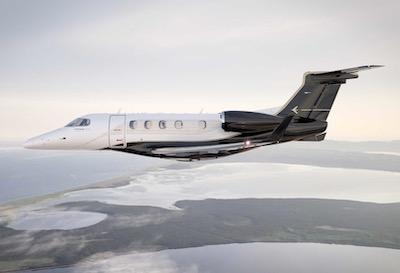Analyst Brian Foley Says The Industry May Be Better Prepared For The COVID-19 Downturn Than It Was For The 2007 Financial Crisis
In a matter of days, the business aviation community has gone from optimism over a promising start to the year to a state of bewilderment, uncertainty and anxiety. While anyone can surmise which way business jet sales and usage are headed based on the recent avalanche of negative financial news, the industry is arguably in better shape to weather this downturn than it was going into the pummeling 2007-2008 financial crisis.

According to business aviation analyst Brian Foley, the epicenter of business aviation is the United States, where 63% of the worldwide fleet, or 14,163 active jets, currently reside according to AMSTAT. Before the turn of events, U.S. stock markets had been at all-time highs that were 67% above 2007 levels, with quarterly corporate profits around a third higher. The most recent quarterly GDP growth figure was 2.1%, compared to 1.9% in 2007. Manufacturing was improving, job growth strong, consumer strength was meaningful and business investment healthy. The unemployment level hovered at historic lows. The most important economy to the industry was clearly in better shape before this downturn than it was in the last.
Congressional reforms to the financial system have required more reserves by banks and tighter lending standards, providing added liquidity and reduced credit risk. For those who need to finance or lease a jet, rates are significantly lower than they were back then.
While the backlogs of business jet manufacturers are smaller than in the late ‘00s, they aren’t stacked with as many speculators. Some manufacturers put added teeth in their contracts since the last downturn, aimed to keep airplane flippers out of their books. While there will inevitably be some cancellations and deferrals, the current order books are stickier.
Business jet deliveries ticked up a solid 15% in 2019 after being essentially flat over the past decade. Much of the increase was from a bevy of recently introduced new planes, which tend to stir up sales, and will do so into the future.

There are admittedly some weaknesses in 2020 compared to before. International markets are weak and will not provide the safety net they once did back when emerging markets were vibrant. Whereas the Federal Reserve had room to cut interest rates back then, today we’re already essentially at zero, meaning fewer accommodative tools. As it was in 2007, the new jet market is still oversupplied with too many models chasing a finite number of buyers.
Few in business aviation will escape the impending downdraft. New and pre-owned sales will all be impacted as buyers wait for some semblance of normality. Reduced business jet utilization will ultimately impact fuel sales (FBO) and maintenance (MRO) activity. While there has been a recent spike in charter activity due to one-time Carlos Ghosn-style overseas escape plans, that too will taper as fewer onsite meetings occur. Preemptive layoffs at smaller firms have already occurred with more public announcements to surely follow.
The industry will undeniably be impacted after 10 years of relatively clear sailing. It’s a cyclical business but the speed and intensity of the change caught many off guard. Although there will be casualties, the majority of players have been here before and are survivors, having adapted their businesses to swings in the past.
It’s said that the second half of 2020 may be more forgiving, but the wait will admittedly be excruciating. While there’s always a worst-case scenario, it’s possible that the positives going into this downturn will at least help to soften the inevitable blow.
(Source: Brian Foley news release)
 ANN's Daily Aero-Term (04.28.24): Airport Marking Aids
ANN's Daily Aero-Term (04.28.24): Airport Marking Aids Aero-News: Quote of the Day (04.28.24)
Aero-News: Quote of the Day (04.28.24) ANN's Daily Aero-Linx (04.28.24)
ANN's Daily Aero-Linx (04.28.24) Aero-News: Quote of the Day (04.29.24)
Aero-News: Quote of the Day (04.29.24) ANN's Daily Aero-Linx (04.29.24)
ANN's Daily Aero-Linx (04.29.24)




